Podcast: Play in new window | Download
Subscribe: Apple Podcasts | RSS
 This week I want to share a session focused on teaching the key defensive principles. The session starts with the basic building blocks of individual defending and progresses to include small group defending and finishes by working with the entire defensive unit.
This week I want to share a session focused on teaching the key defensive principles. The session starts with the basic building blocks of individual defending and progresses to include small group defending and finishes by working with the entire defensive unit.
The amount of time you spend in each phase of this session will depend on the age and experience level of your players. With younger players you may only go as far as the 2v2 defending work because those numbers are enough to teach them what they need to know at this stage. If you’re coaching older players you may spend less time on the basics and more on the small-sided games and phase of play exercises but I believe even the most accomplished players need to spend some time working on the basic principles. Without a solid foundation then you will see individual break downs leaving gaps for the opponent to exploit.
Training Session
Teaching the principles of defending is important for players of any age. If you start by introducing 1 v 1 defending at an early age you can gradually build on those concepts to include defending in pairs and in units.
This training session is designed to build up from the most basic unit of defending to a full Attack vs Defense phase of play exercise. If you had a full squad of 22 players you could continue by teaching the attackers their responsibilities when your team is out of possession. This could also be accomplished by starting the phase of play exercise with a ball rolled out by the goalkeeper to work on many of the same ideas. You’d be doing the same exercise but with a focus on the forwards and midfielders.
I’ll also show you how you can use part of this session if you are working with teams that are still playing small-sided soccer.
Training Environment
I try to use one set-up for as much of the session as possible. This means less time wasted moving cones and creating new areas. This also allows the players to see how the session builds. They can see how each part of defending relates to the next.
You can scale it to the size of field your team is playing on. I use 10 x 10 girds regardless of the age. I try to use mats instead of cones inside the area if possible. For this example I’ve used cones on the outside because I don’t have enough mats so I’m showing the area how I had it set up.
1 v 1
Set-Up
- Defenders with a ball at top of the box
- Attacker diagonally across from them
- Start with passive pressure to teach positioning and body shape
- Defender passes to attacker
- Attacker tries to dribble across the line to score
- Defender can counter attack if they win the ball
Coaching Points
- Pass and Pressure
- 1. Travel when the ball is traveling
- Bend your run to take the line away
- a. ‘Banana Run’
- ‘Get on your surf board’
- a. Quarter turn
- b. Weight on back foot
- Force them one way
- Tackle if they cut back
- Get across them if they try to run into the open space
- Make contact
- Win the ball, don’t just kick it away
Progression
- Switch to the other side
- Reteach everything when you switch
- If defender allows attacker to score they defend again
2 v 2
Set-Up
- Remove middle cone to make area 20 x 20
- Two defenders at the top of the box with a ball
- Two attackers on the far side
- Everything else is the same
- I start with the attackers passing back and forth
- Defenders work on their movement and communication
- Make it live when they’re ready
Coaching Points
- Closest defender pressures the other covers
- Communicate who is pressuring
- Covering player should tell pressuring player where to force them
- I like to take the line away
- Force attacker into pressure
- iv. Covering players distance and angle
- Split the attackers
- Teeter-totter
- v. Switch roles when ball is passed
- Communicate
- Travel as the ball travels
- 3. Bend run to take the line away
Give-and-Go Defense
- Drop back as soon as your player passes
- Don’t get caught watching the ball
- Communicate
Overlap Defense
- Slide and switch players
- Trying to track your player will leave the middle open
You might stop here with younger or less experienced players. You can skip to zonal passing game I describe next but with only two players in each zone.
3 v 3 or 4 v 4
- Which one?
- You could progress to 3 v 3 and stop there
- If you have teams playing with a back three
- Or you could go straight into 4 v 4 if you player with four in the back
- The roles of the balancing players are pretty much the same whether you have one or two of them
- I like to go progressively so I do 3 v 3 and then 4 v 4
Set-Up
- Remove cones to make it 30 wide by 20 long
- You can go 30 x 30 once the players understand their movements
- Same as before
- Start passively to define each player’s roles and responsibilities
Coaching Points
- Outside Defender
- Cut off the line – force them inside
- Tuck in and form a triangle when the ball is central
- a. Cover on both sides
- Role of Balancing player
- Ready for the direct switch
- Stay in line with covering player
- Not too close but don’t leave a gap you can’t cover
Middle Defender
- Lots of communication
- Ready to step up and pressure the ball in the middle
- Force it one way
- Directed by outside players
All Defenders
- 1. Anticipate where the ball will go
- 2. Travel when the ball travels
- 3. Close gaps
- 4. Angles and distance of cover
- d. Essentially the same for 4 v 4
- i. More players so more communication and coordination
Four Zone Game (Foosball)
Set-Up
- Put mats back to form the grid
- Two teams divided into two groups each
- Ten yard grid for each player in each group
- 20 yard wide area for 2 v 2
- 30 yards for 3 v 3
- 40 yards for 4 v 4
- The groups occupy the zones as shown in the diagram
- They alternate
- Each group is restricted to their zone
Process
- The group with the ball tries to find an opening to pass it through an opening between the groups to their team mates on the other side.
- The ball must be played on the ground
- If the ball is intercepted that group tries to complete the same task
- You can award points to the defending team for winning the ball or the attacking team for completing a pass through the defense
Coaching Points
- These are the same as in the 3 v 3 and 4 v 4 game
- Mistakes are more easily exploited because of the receiving players on the other side.
- Closest player pressures to limit options
- 1. Take away the line on the outside
- 2. Force one way or the other in the middle
- Close the gaps
- ‘No Splits’
- Balancing player stay in line with the covering player(s)
- Communication
Phase of Play
Set-Up
- This game will put the defending tactics under the pressure of a game scenario
- Defending 1-4-2-0
- Attacking 3-3
- The attacking team tries to score
- The defending team works to keep their shape, prevent a shot and win the ball
- 1. Two small goals to counter attack into for the defending team
- 1. Two small goals to counter attack into for the defending team
Coaching Points
- Focus on only the defending team
- Work with two holding midfielders to screen the back four and pressure the ball
- 1. They should slide and cover for each other
- Back four covers for holding midfielders
- Communication to coordinate their movements
- Get the ball to outside backs to counter attack
6 v 6 + GK
- One team attacks the large goal
- The other team attacks the two small goals
- Allow the teams to set-up as they choose
- Play the game as, ‘make it, take it’
- i. If a team scores they keep the ball and attack the other goal
- ii. Quick transition
- iii. Keeps tempo high
- iv. The players enjoy it
- I don’t coach this
- I see if the players apply what we’ve worked on in training
- I look for mistakes to correct in future sessions
Building a solid defense won’t be done in one session but the principles that are taught in this session will give your players the foundation and understanding to defend well individually and as a team.
Printable Show Notes
The show notes for each episode are accessed through the WCC Training Center.
They are FREE but you will need at least a Free Membership to the Training Center in order to view and print them.
Click on the image of the notes and if you’re already logged in to the Training Center you’ll be taken to the Podcast page. If you’re not logged in your be taken to a login page where you’ll also be able to login or register if you are not already a Member.
Remember!
Make sure you subscribe to Coaching Soccer Weekly through iTunes, or your podcast provider of choice, to be sure you never miss an episode.
We would appreciate it if you would leave us a 5 star rating and/or a written review on iTunes to help spread the word about the show and ensure that we can continue to bring you top notch guests in the future.
In the Next Episode
I’ll look at the different ways you can organize your training sessions. Players learn in different ways and presenting the same topic but organized in a different way may help you teach a concept that your players have been struggling with.

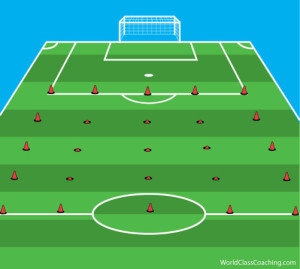
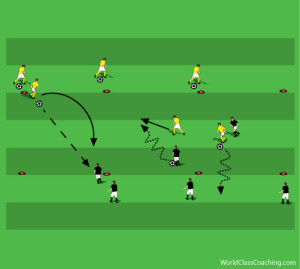
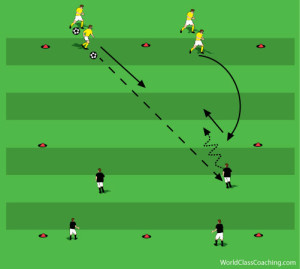

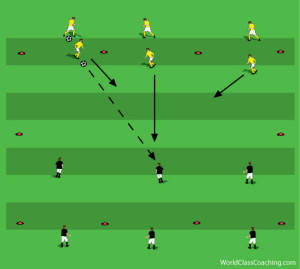
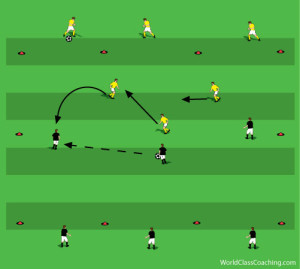
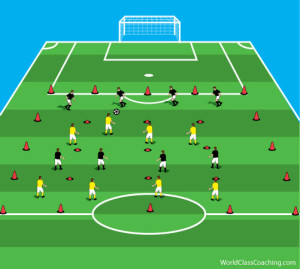
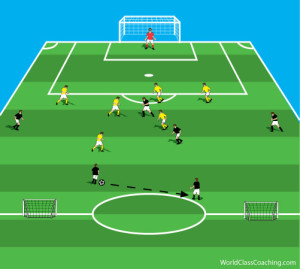

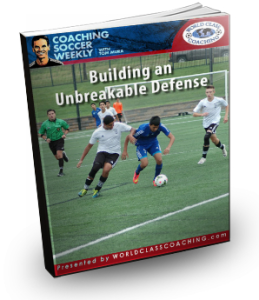
Very enreaching information concerning defending, from individual to group defending.
Thanks Stanley!
thank you for taking your time and help the world of football